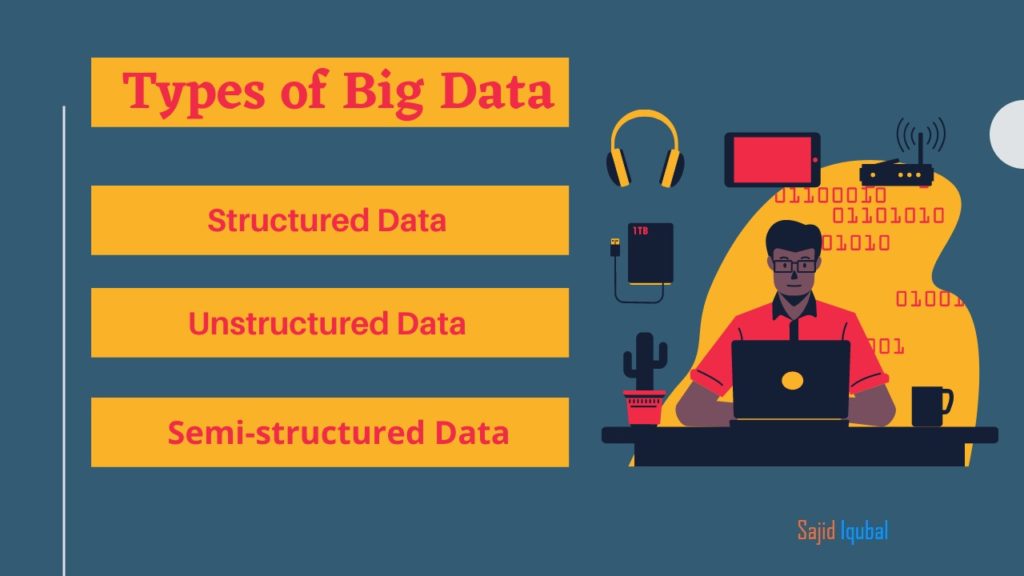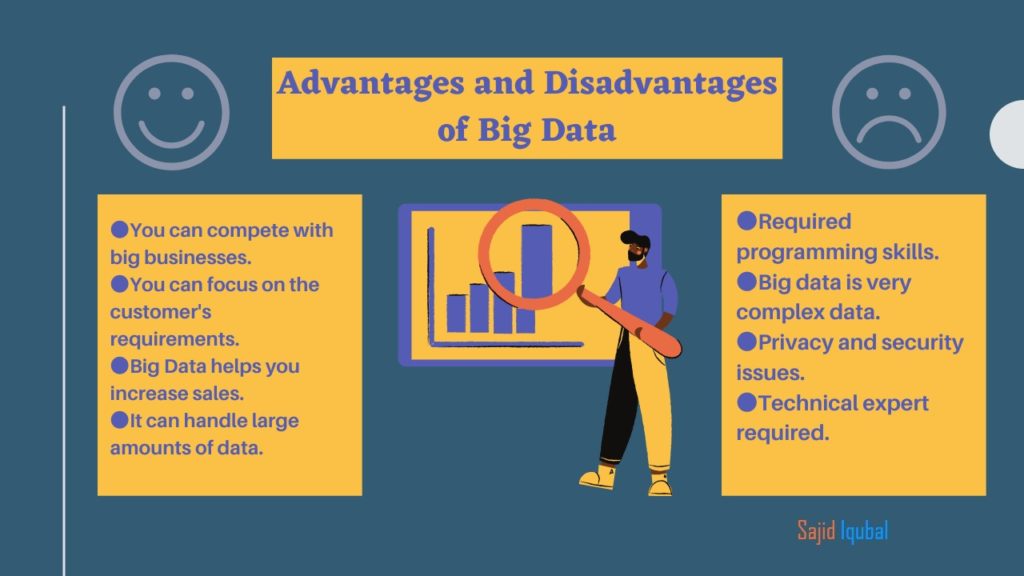Now Big Data Solutions provide technology to actually capture, store and analyze data in seconds that make it easy to find Insight and relationships for innovation and competitive games. So with appropriate analysis, Big Data can be used to determine the reasons for business failure, cost reduction, time savings, better decision making, and new product creation. Hence individuals with knowledge of Big Data are referred to as Big Data Specialists and hence Big Data Specialists will be specialized in Hadoop, Map Reduce, Spark, NO SQL and DB tools like HBase, Cassandra, and MongoDB, etc. so that data science actually deals with big data to extract information.
Types Of Big Data

Big data is of three types:
Structured Data
Everything in this type of data is in an ID-like structure under the ID name below the Employee table name, everything is in one structure. This type of data is called structured data.
Unstructured Data
There is no data structure here unstructured data can also be called raw data. Here, there is data in video, audio, images, text.
Semi-structured Data
Semi-structured data is the combination of both these data. The combination of these two structures is called semi-structured data. It contains data of different varieties and is also arranged by category.

What Are The Advantages Of Big Data?
- If we use big data then your efficiency increases.
- Big data improves your pricing.
- It can handle both hardware and software failures.
- You can compete with big businesses.
- You can focus on the customer’s requirements.
- Big Data helps you increase sales.
- It can handle large amounts of data.
What Are The Disadvantages Of Big Data?
- Required programming skills.
- Big data is very complex data.
- Privacy and security issues.
- Technical expert required.
- Special skills are required e.g, data mining, data scientist, data analysis.
Where The Big Data Law Comes In?
How you use big data is a cause for legal concern. It is not only about data collection and whether proper disclosure was given. When the FTC first addressed issues about big data, it was in relation to the use of big data rather than how it was collected. This has caused a ripple effect in how big data is viewed. According to PR practitioners, data should be used to inform and not to influence.
While the law is gradually covering up the exposed parts of the vulnerabilities that big data pose, big data is also making changes to the law with its internal functioning and will challenge the age-old fundamentals of what is right and wrong. After all, big data is based on solid evidence, while the law has always been an abstract idea of how and why things should be done. It is not scientific, but more or less based on current ideas of humanity. In archaic cultures, the law continues to protect the aggressors, and victims are never given the justice they are entitled to.
Across the board, we are demanding the use of technology to both customers and regulators. For customers, implementing the technology reduces the costs associated with these operations and limits the amount of information required for production. For regulators, this allows them to access critical content faster and use fewer resources. Furthermore, there is empirical evidence that technology can be more consistent and accurate than human review.
In France, legal technology is not widely used in the US or UK. However, French lawyers see the obvious benefits of using technology in merger control and dawn raids. Later, the technology needs to be deployed quickly, as the FCA confiscates the entire mailbox, allowing attorneys to have a significantly shorter timeframe to complete a privilege review before their review. Therefore speed is really abstract. Unlike many other jurisdictions, there is no requirement for internal document production on the filing form and this actually applies only later in the proceedings. However, it is accepted that as data volumes continue to grow, technology will be a necessity for risk detection for these cases, regardless of the regulatory burden.
In the UK, the technology-agnostic CMA is increasingly using its formal information-gathering powers. Those powers are being used at different stages throughout the process – including working to establish the principle of alternative retaliation or claim for damages. The parties likewise use the “back end” technique to formulate their strategy in response to these increased requests regularly.
Both courts have the use of continuity technology to trigger a review of privilege. Automating workflows in their entirety is risky, but technology can greatly accelerate human review.
The respondent is believed to have played a large role in the documents produced in these proceedings. These decisions will have an impact on how and what data is collected and shared. While the CMA maintains significant control over accountability determinations, the European Commission takes a more balanced, collaborative approach, often entangled with lawyers and technologists.